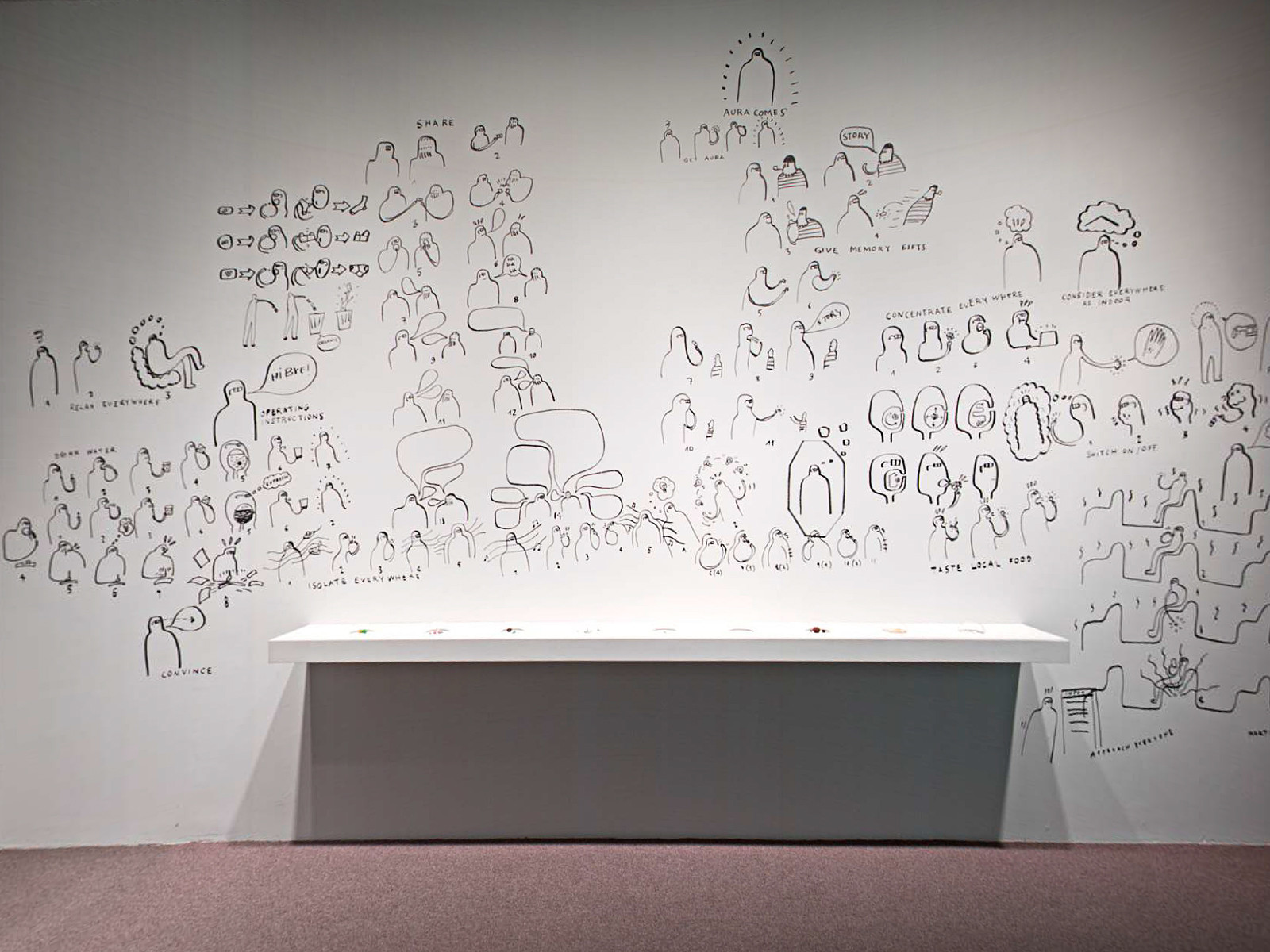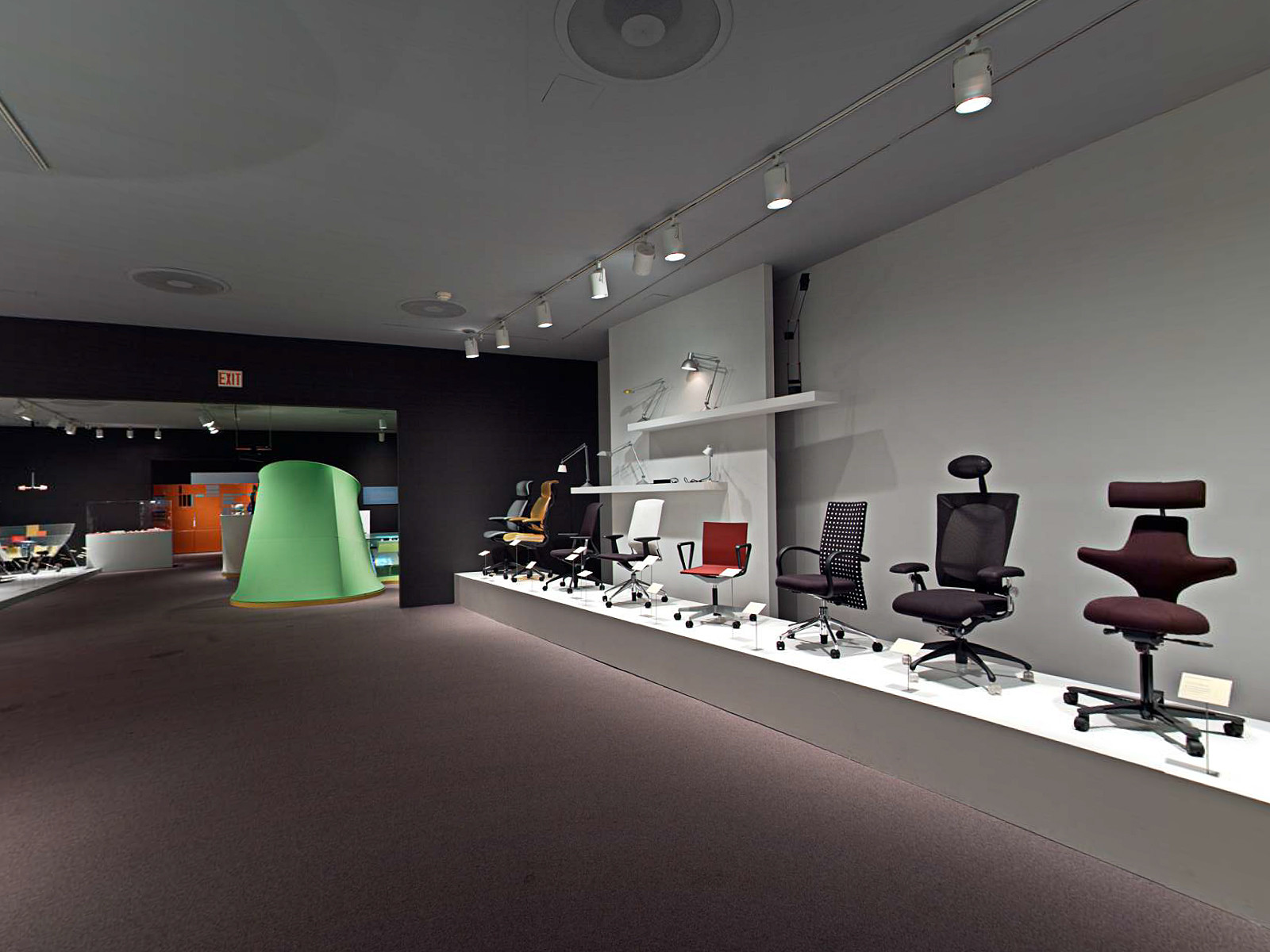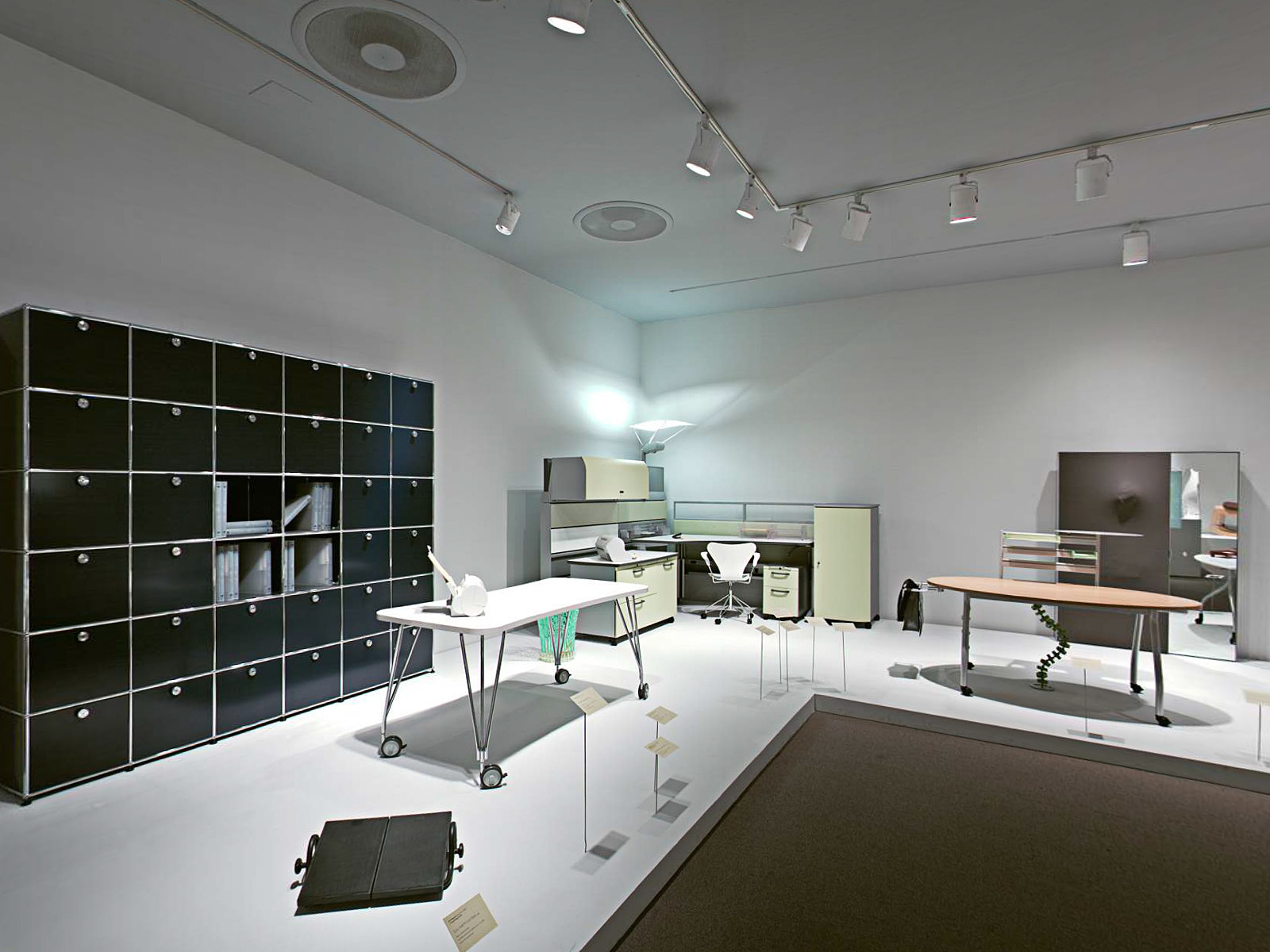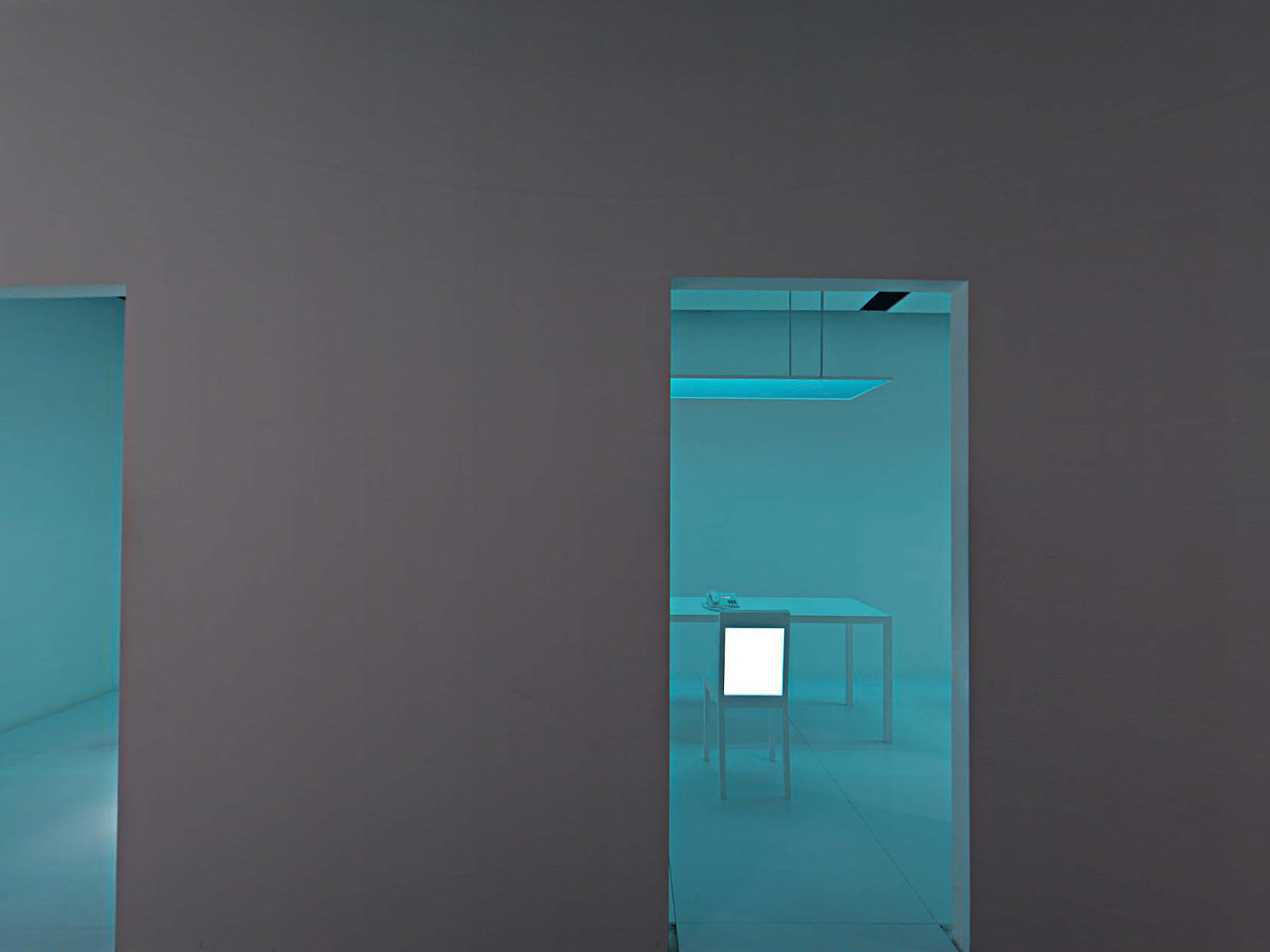WORKSHERES: DESIGN AND CONTEMPORARY WORK STYLES
HAPPENINGText: Michael Foronda
Workspheres at The Museum of Modern Art brings together a collection of objects and environments that represent the convergence of our everyday lives with the workplace. At the core of the exhibition is the role design, at the hands of designers and architects, has taken in shaping how we practice at work and the cultural products we leave behind. New uses of technology have been a motivating force in terms of creating a paradigm shift from production efficiencies to increased creativity. Despite this move towards collapsing the author with her new tools, the works in the show have indicated that much of the thinking is grounded in fundamental human characteristics.

Installation view of the exhibition, “Workspheres”
In arriving at a theme to address a sampling of the works represented, a number of compelling projects turned its attention towards issues of memory and impression. While these two characteristics made for unlikely rationale for design in the workplace, the designers who managed to employ them, whether intentional or not, created an added dimension that spoke beyond mere physicality. These qualities enabled the select works to resonate with one another in spite of their disparate sizes and functions.

Installation view of the exhibition, “Workspheres”
The ubiquitous presence of Herman Miller’s Aeron office chair within corporate culture hasn’t diminished the development of seating that has taken aim at raising the bar on innovation. The Freedom Chair, developed by Niels Diffrient, supplies a breakthrough with its counterbalancing mechanism that self-adjusts according to the user’s weight, eliminating the need for manual adjustments. In addition the chair is outfitted with a patented material, Technogel, which leaves an imprint of the user only to be canceled out by its elastic memory.

Installation view of the exhibition, “Workspheres”
The Spandrobe Storage Closet, designed by Rick Galezowski and Marty Kohn, addresses today’s concerns regarding storage space while its footprint to a minimum. At a mere 7 inches in depth, the Spandrobe accommodates arrange of items from coats and shoes to umbrellas and handbags. The ability to house larger bulkier is made possible by a spandex panel that expands leaving the items contours to be read by those passing by. The spandrobe’s ghostly impression makes us constantly aware of how our personal items become our reflection onto the workplace.

Installation view of the exhibition, “Workspheres”
Personal Skies, an ambitious project designed by Naoto Fukasawa and IDEO, is a meditation on the ephemeral and unspoken aspects that reside in the workplace. While only a handful of the concepts pertaining to project have been realized (one is a chair whose back captures a still image of user and the other is a projected sky deployed much in the same way that we use screen-savers), it maintains a level of believability due to the simplicity of its intentions. Benches that mark territory and desk surfaces that respond to the objects placed upon them are among the concepts whose lack of execution is momentarily set aside by their poetics.
Workspheres, which continues through April, marks a significant turning point in how our personal sphere of influence has collapsed onto the workplace. The projects presented are both residue of this change in thinking as well as catalyst that fosters creation through the lens of a environment with all its accoutrements.
Worksheres: Design And Contemporary Work Styles
Date: February 8th – April 22nd, 2001
Open: 10:30 – 17:30 (Saturday till 19:00)
Place: MoMA
Address: 11 West 53 Street, New York, NY 10019
Tel: +1 212 708 9400
https://www.moma.org
Text: Michael Foronda




